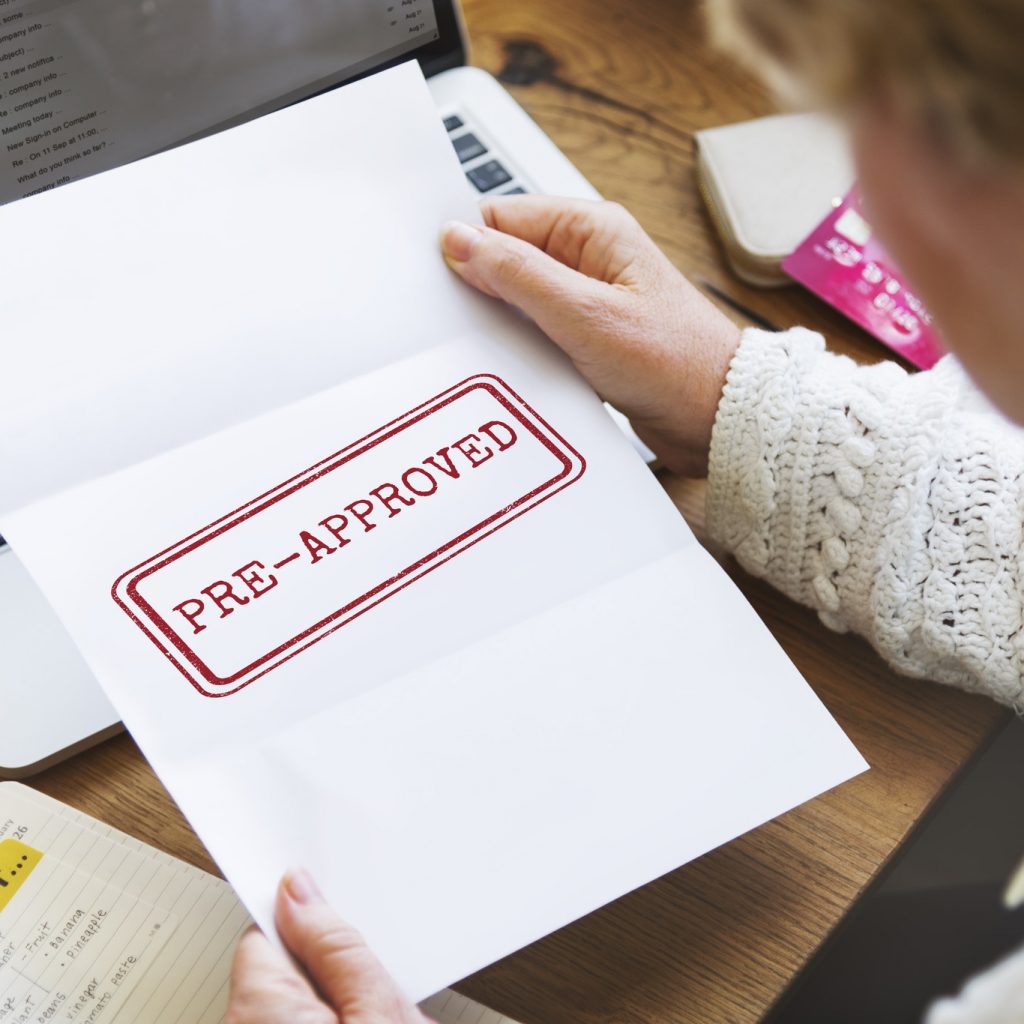STEP 1: Calculate “how much house” you can afford.
For many people, the exciting part of home buying starts when you look at houses. But before you look and find a house, you need to know what you can realistically afford. Taking the time to estimate the maximum mortgage payment you can afford and knowing your debt-to-income ratio gives you a better idea of how much house you can afford. You’re less likely to be surprised by the preapproval number.
Home affordability mortgage calculators can get you started, but they don’t always take into consideration certain factors. For example: Property taxes, insurance, private mortgage insurance (PMI), homeowner association dues or condo management fees. When you know how much you afford each month, it helps you when you do use a calculator.
Estimate how much house you can afford using the 29/41 rule.
The 29/41 rule refers to an ideal maximum percent of your gross (pre-tax) monthly income that you should spend on housing (29%) and repaying debt (41%). These are two important factors lenders consider when you apply for a loan and how much financing you can receive:
29% Housing Expense: The percentage of your pre-tax monthly income that goes toward a mortgage payment/housing expense. In an ideal world, lenders want to see your housing expense at 29% or less of your gross monthly income.
41% Debt-to-Income Ratio: The percentage of your pre-tax monthly income that goes toward paying your monthly debts (ex: mortgage, car loans, student loans, credit cards). This is known as your debt-to-income ratio (DTI). A DTI of 41% is ideal, but you can get a loan with a higher debt-to-income ratio. DTI is something that can stop you from getting a loan. It’s a big deal. There are steps you can take to improve your DTI.
Note: 29/41 is not a hard and fast rule. It’s a guideline.
There are other factors which may allow for a higher DTI. There are some people who max out their monthly mortgage payment at a higher percentage of their pre-tax monthly income or max out their monthly debt at 50% of their pre-tax monthly income. If you are concerned about budgeting, 29/41 is simply a good rule of thumb.

Home buying calculations
Calculate Housing Expense:
To calculate the percent of your monthly income that currently goes toward your housing expense, divide your current mortgage payment by our gross monthly income and multiply by 100. This will give you the percentage you spend each month. (Note: If you don’t know your gross monthly income, take your salary or the total amount of money make in a year before taxes are taken out, and divide by 12.)
Example: Susan currently spends $1800 on her mortgage each month. That $1800 includes the loan principle, interest, home insurance, property taxes, and condo fees. She makes $7000 a month (pre-tax/gross).
$1800 divided by $7000 = .25 x 100 = 25%. Right now, 25% of her gross monthly income goes toward her housing expense.
To calculate the maximum you should ideally pay toward a mortgage payment/housing expense, multiply your gross monthly income by .29 (the maximum most lenders like to see).
Susan’s example: $7000 x .29 = $2030. If using the 29/41 rule as a conservative guide, Susan could afford to pay $2030 for her mortgage each month. This would include the principle, interest, insurance, and taxes.
Calculate DTI:
To calculate the percent of your pre-tax monthly income that goes toward paying off debt (your overall DTI), add up all your debt (ex: mortgage or rent, car loans, student loans, credit cards, child support, alimony, any other debt) and divide it by your gross monthly income and multiple by 100. You don’t need to include groceries, utilities, and other month to month expenses.
For example: Susan pays the following debt every month
$350 credit card payments
$1800 mortgage
$450 car loan
$350 student loans
_________
$2950 (total debt) divided by $7000 (gross monthly income) = .42 x 100 = 42%
In Susan’s case, her current housing expense is 25% and her overall DTI is 42% of her gross monthly income.
Another example:
Mary’s and John’s monthly debt includes:
$500 – credit card payments
$2100 –current mortgage or rent
$500 – student loans
$500 – car loan
Their total monthly debt = $3600
Their gross monthly income is $8,000
3600/8,000 = .45 x 100 = DTI of 45%
45% of their monthly income goes toward paying debt.
Note: There are other factors which may allow for a higher DTI. There are some people who max out their monthly mortgage payment at a higher percentage of their pre-tax monthly income or max out their monthly debt at 50% of their pre-tax monthly income. 29/41 is simply a good rule of thumb. Here are the maximum DTIs for the following types of loan.:
Conventional: 50%
FHA: 55%
VA: 55%
USDA: 43%
Jumbo: 43%

Your DTI will influence the interest rate, amount of loan you can get, and your required down payment. The higher the DTI the higher the risk you are to the lender because you have other debts to pay off which means you could default on your loan. They may charge more interest or limit the amount they will loan you to protect themselves.
STEP 2: Get preapproved
Your mortgage preapproval is the first step in the home buying process when it comes to working with a mortgage broker. Preapproval is part of the loan application process. When you apply for a loan, the mortgage broker will first verify your claims about income, debt, and assets, and run your credit score. They will tell you the types of loan programs you qualify for and how much for which you can qualify. If you’re approved, you’ll receive a preapproval letter to give to your realtor and sellers. If you provide the correct information and documentation, you can have a preapproval letter in three hours.
Obviously, you want to get great loan rates, but there are other things to consider when choosing a mortgage broker. If you’re not pleased with the service you receive during the preapproval process, you don’t have to get your loan with that mortgage broker. You can shop around and ask these questions:
- Are they an independent broker or are they a loan officer tied to a particular bank or lender? Independent brokers can shop the market. They tend to know the top lenders in the country and will go where they can get the best deal and best service. These lenders know this. They want to keep their business, so they strive to work with your independent broker.
- Are you dealing with the same people when you call about your loan application, or are you handed over to someone new each time? Do they know you and your file by name?
- Do they respond to your questions quickly and accurately?
- Are you working with an experienced loan officer?
Why do you want to be preapproved and not just prequalified?
Your preapproval tells realtors and sellers whether you can afford to buy the house you’re looking at or making an offer on. It also lets them know you won’t have problems finding a lender when you decide to purchase. This is especially important in a seller’s market when competition for homes is stiff.
It’s important to understand there is a difference between preapproval and prequalification. Prequalification does not require verification of any of your claims about income, assets, and debt. Preapproval does require verification which explains why preapproval carries more weight and indicates you can actually get the funds you need to purchase a home.

Information and documents you need for a loan application:
Income Information needed for all borrowers listed on application
- W-2 forms (two years’ worth)
- Copies of two most recent paystubs (last 30 days)
- Self-employment requires year-to-date profit and loss statement (two years’ worth), Form 1099s used for income reporting and taxes. Must be self-employed for two full years.
- Alimony and Child Support
- Real estate income documentation includes rental income, address, lease, and current market value of rental property if using this to quality for a mortgage
Assets
- Most recent 2 months’ bank statements (60 days) complete statement/all pages.
- This includes any source of funds you’re using as assets for this loan (e.g., savings, checking, money market, mutual funds, stocks, bonds, retirement, gifts, trust, net equity)
- List any property you own free and clear, and the taxes and insurance associated with this property.
Debt
Your credit report will provide most of the information needed about your debt. Share any debt that isn’t likely to be on your credit report.
- A loan from your employer that may show up on your pay stub.
- Personal loans or any documented outside loans
- Any kind of loan that has a lien against the property
Real Estate Debt: If you currently have a mortgage, share the most recent mortgage statement.
Other Records and Information:
- Renters: If your credit is below 640, you may need to show payments for the last 12 months, contact information for landlord for the past two years
- Divorce: Be prepared to share any documentation relating to child support and alimony payments. This includes ALL pages of divorce decree. If you don’t have the divorce decree in PDF file, you can get it from your attorney.
- Bankruptcy and foreclosure: ALL pages of bankruptcy or foreclosure documents, even the blank pages.
- Copy of valid ID
- Social Security Number
The more prepared and organized you are with your documentation, the better. This will help the process move more quickly by providing your mortgage broker with all the information needed to get you preapproved. You’ll need this when applying for the loan as well.
STEP 3: Find a realtor and start looking for your new home.
For most home buyers, this is the exciting part. With your preapproval taken care of you, you can start looking at home within your price range. You probably already have a mental checklist of what you hope to find in a house. There may be absolute necessities like location and proximity to work and school zones. The more flexible you can be, the more options you’ll have.
As a buyer, working with a real estate agent just make sense. All agent fees are paid by the seller, so it costs you nothing. Your agent is there to represent you in the home buying process. They can save you time and stress by finding homes and setting up showings. When it comes to making an offer, they understand contingencies, negotiations, and how to best present your offer to the seller. Your realtor is there to guide you through the home sale process and answer your questions. This is what they’re trained to do.

STEP 4: Make your offer.
Putting together an offer can be challenging, and it’s another reason why having an agent is so important. Your agent has experience with the current market and will guide you. They can compare recent sales, local property values, and help you make a competitive bid. In addition, they will draw up the offer and submit it to the seller or seller’s agent.
There are several things to consider besides the price when you make an offer on a property.
STEP 5: Conduct an inspection and appraisal
The lender will have the house appraised. An appraisal is necessary because lenders want to know the home is worth what they’re loaning you. If the appraisal comes in lower than the agreed price of the home, then you may have to offer more cash at the closing, renegotiate with the seller, or walk away from the deal.
The appraiser looks at property values and the overall condition of the house to determine the fair market value. They will take into consideration property upgrades and other properties in your area. The appraiser will make a final report and send it to your mortgage lender. An appraisal can cost anywhere from $300-$600 depending on the size and type of property

A home inspection is a much more involved process than an appraisal. The home inspector is looking closely for problems with property, looking at the electric wiring, plumbing, roof, AC/Heating. The inspection may be more or less involved based on the type of loan you’re receiving. Different types of loans may have specific inspection guidelines. The buyer pays for the home inspection and the price will vary based on size and age of the home. Inspections aren’t required to get a mortgage, but if you choose not to get one, it’s buyer beware.
As the loan mortgage process moves forward, the lender’s underwriter will review your file and make sure all the documents are in order before giving you final approval.
STEP 6: The closing
Once the loan is clear to close and the underwriter has signed off on your file and given final approval, you’ll receive a closing disclosure with all the numbers and then a closing date.
Documents you’ll need: Identification, proof of insurance, checks or cashier’s checks to cover closing costs.
Summary
Buying a home is an exciting process with several steps including getting your finances in order. Learning about the home buying and mortgage process helps make it go more smoothly, but you don’t have to go it alone. Find a broker and realtor you trust and build a team that can help you navigate the process.


